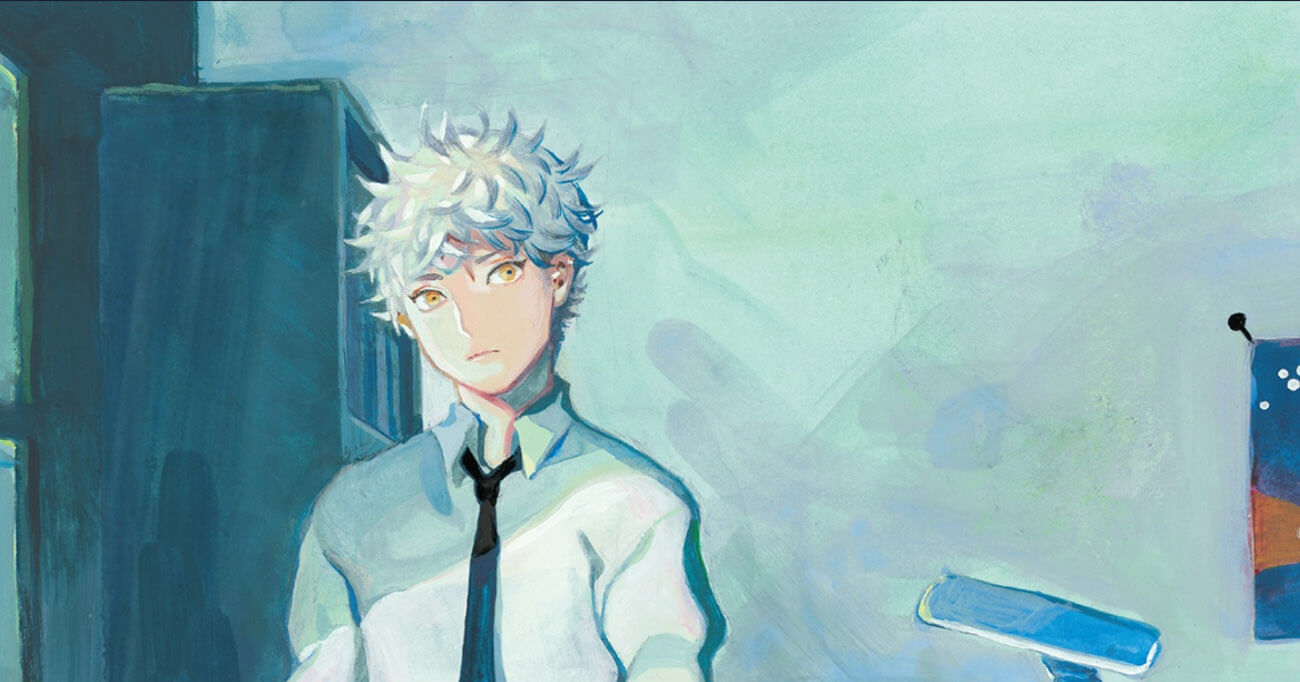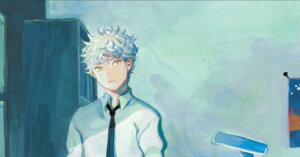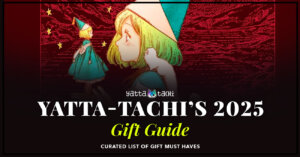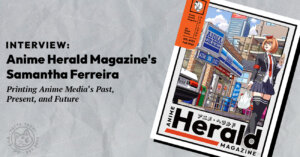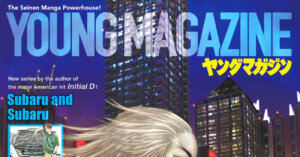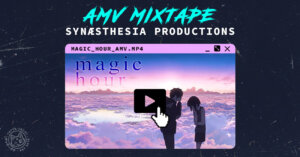Spoiler warning: This essay contains minor spoilers for the Blue Period manga
The Spark of Artistic Passion
In late March 2025, I took an Uber to visit the library for the first time in years and found volumes 1-12 of Tsubasa Yamaguchi’s ongoing manga Blue Period. Released in 2017, the manga is a coming-of-age story about a delinquent named Yatora Yaguchi. Despite making good grades in school, he feels empty inside until he happens to visit the art room. After being moved by a gorgeous painting by one of the members of the art club, Yatora is inspired to start painting and eventually aim for the top art school in Japan.
I first came across the series Blue Period in 2022 through its 2021 Netflix anime adaptation. Due to how it authentically depicted the challenges of making art, I enjoyed and related to it as a creative person who wrote poetry and drew digital art casually. Four years later, reading the manga would leave a different impression. After a traumatic incident in early March left me feeling numb, reading Blue Period was the first time I felt anything in a while.
In particular, the first six volumes of Blue Period shifted the way I create digital art. After I got a personal copy of the books, I decided to reread them and study Yatora’s artistic growth as his character arc progressed. One of the key aspects of Yatora’s growth and my own is unlearning preconceived notions about what it takes to do and enjoy art.
Hard Work Vs Talent
In Volume 1, Yatora doesn’t “get” art at first because he is too used to doing what’s expected of him, such as studying and getting good grades to please his parents and smoking cigarettes to fit in with his “slacker” friends. It doesn’t help that he has the appearance of a delinquent due to his bleached hair and ear piercings. Things change when he sees artwork that literally stops him in his tracks while struggling to do an assignment for his elective art class. He then receives some sage advice from his art teacher Saeki, and later Mori, the older student who made the breathtaking art that he admired.
One scene from volume 1 has Saeki-sensei stating, “What do you want to say to everyone? Give us a scene that expresses that. Art is fun, you know. And those that are true to themselves make truly great art. Because art is a language without words.” In another notable scene, Yatora praises Mori for her talent, but she dismisses his compliment by saying, “I actually put in the work to study art and art-making methods. Haphazardly calling this my talent is like saying I didn’t do anything to achieve this.”
Both Saeki and Mori’s conversations with Yatora struck a chord with me because of my own narrow-minded perceptions about making art and those who taught me. Up until that point, I’d thought that my art couldn’t be good because my art style and skill level wasn’t like other digital artists, especially those who made money from their art professionally. As a Black-Asian child, I wanted to do art, but my parents made it seem like it was a waste of time. I was also over-eager at times and chastised for it by grade school art teachers. Moreover, I would look at artwork from other students, especially from other Asian kids who made visually stunning pieces, and decided that I couldn’t “do art” because I lacked the talent that they had.
A Passion Stalled, A Rough New Start
In 2021, I rediscovered art and started doing it digitally because I wanted a hobby that healed my inner child by recapturing the joy of messing around in Microsoft Paint as a kid. Using a phone stylus, a tablet, and the art app Autodesk Sketchbook, I draw digital art for fun and as an emotional outlet to cope with depression and anxiety. Occasionally, I create digital art as gifts for loved ones during holidays or birthdays, but rarely share my art publicly to prevent unnecessary pressure.
For four years, I enjoyed doing digital artwork with a basic knowledge until the traumatic incident that occurred in early March 2025. In the aftermath, I wasn’t given enough time to recover due to the sudden onset of my mom’s dementia. Instead of focusing on myself, I had to focus on catching up on missed freelance work and managing additional family caregiver stress, resulting in my creativity being put to the side. As a result, I was going through the motions of daily life while being emotionally burned out. When I read Blue Period, I found myself wanting to rediscover my creative passion by learning how to use professional art methods and techniques. It also helped that I was gifted an art stylus from my sister.
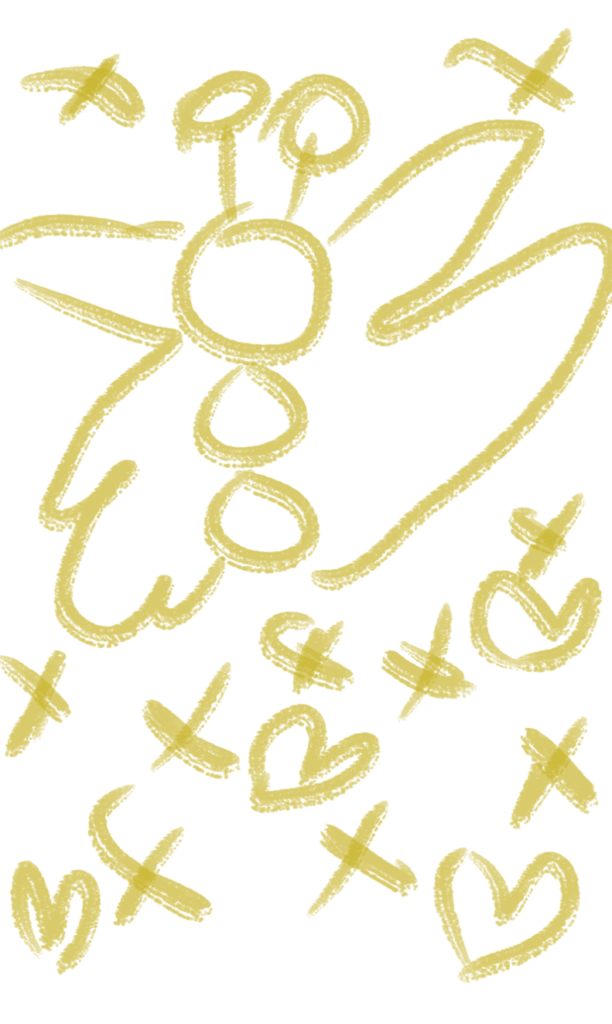
One of the artistic methods seen in Blue Period that I implemented into my digital art is doing roughs. In visual art, roughs are a rough drawing or painting that is made before doing a full piece. In Volume 2 of Blue Period, Ooba-Sensei, the teacher for an oil painting night class that Yaguchi enrolls in, advises him to do more roughs to figure out what he wants his art to say. I decided to start doing rough drawings to have a better idea of how I wanted to do a digital art piece.
At the time, I decided to do a digital painting as a gift to a new friend I’d made. Instead of rushing headfirst into the full piece, I did three different roughs to brainstorm what I wanted to paint. In half an hour, I felt more productive and relaxed doing the rough sketches than I did when I took an hour to do a full piece. For the first time, I was giving myself permission to slow down and appreciate the process of creating digital art, which allowed me to enjoy making the full piece more. As a result, I ended up doing three different butterfly paintings before picking one to gift to my friend. She loved the painting and found it sweet that I put so much work into it.
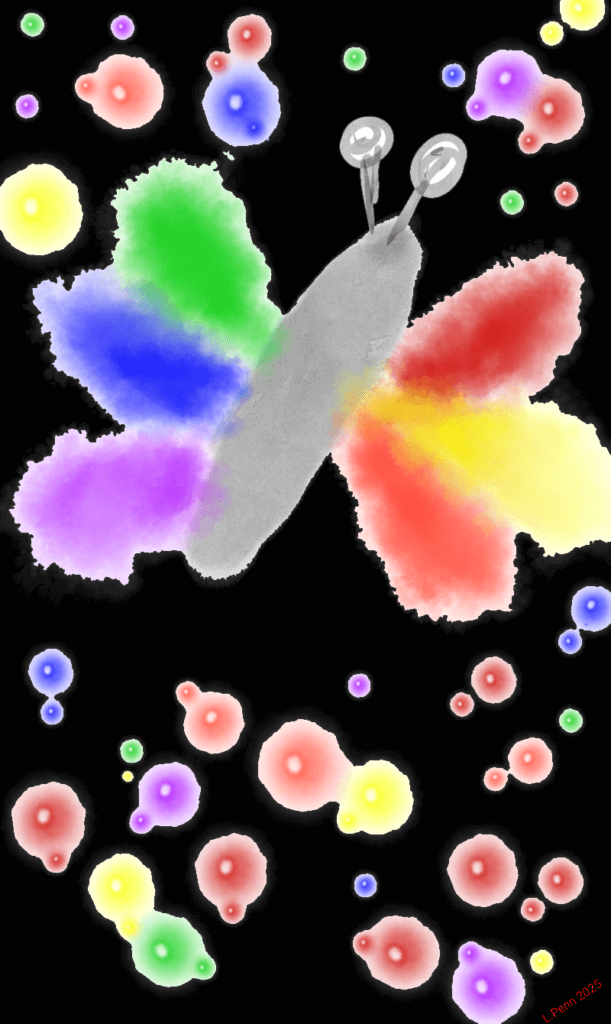
Finding My Favorite Scenery
Another way that I would follow Blue Period‘s artistic methods is by doing my version of Yatora Yaguchi’s very first art assignment, a painting inspired by the theme of “my favorite scenery”. In Volume 1 of Blue Period, Yatora is taking an art class as an elective as part of his high school course requirements. Initially, he considers art class as part of a quota to fill. When Yatora’s art teacher Saeki assigns him homework based on the theme of “my favorite scenery,” Yatora doesn’t take it seriously at first. Then, Yatora visits the art room after school to retrieve his missing pack of cigarettes and happens to see breathtaking artwork by Mori-Senpai while encountering the art-club hosted by Saeki. Saeki speaks with Yatora about making art to express himself sincerely, but her words don’t sink in until he meets Mori-senpai later.
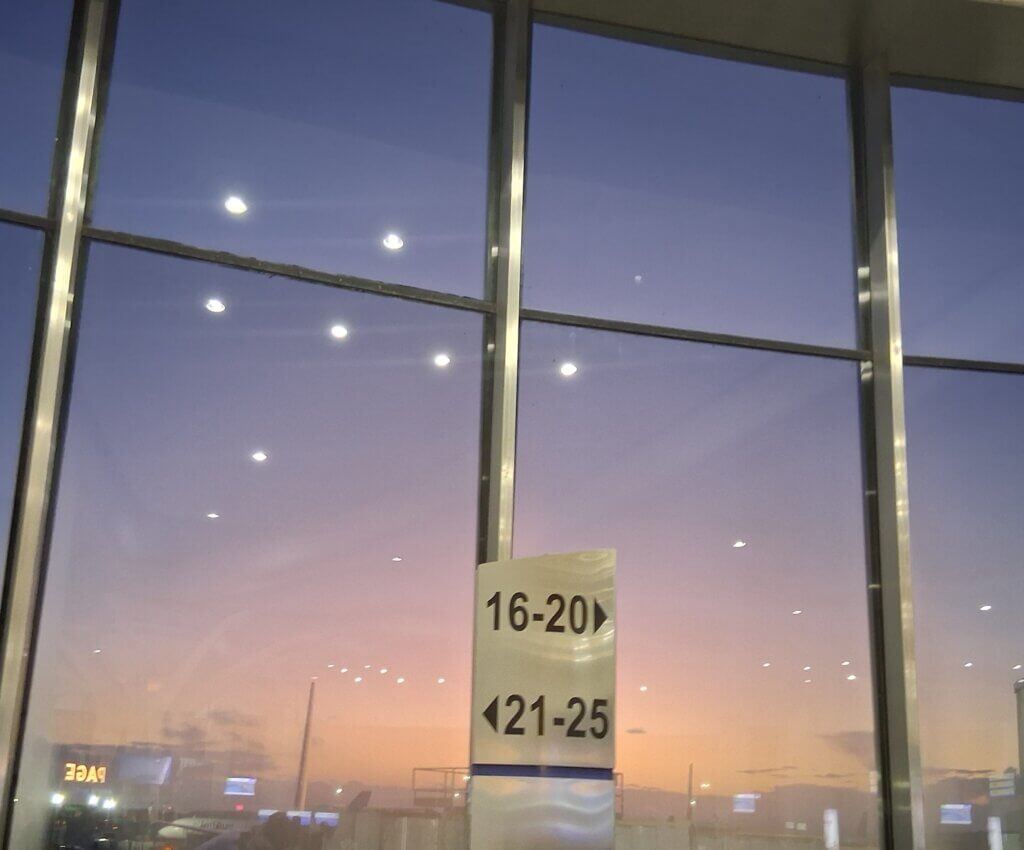
On the way to school the next day, Yatora remarks how nice Shibuya looks in the morning but downplays it to save face in front of his friends. Once Yatora meets Mori-senpai, she affirms his perspective by saying, “If what you see is blue, then let it be blue, be it an apple or a rabbit.” As a result, he completes the “my favorite scenery assignment” by doing a blue painting of Shibuya in the morning. It is here that he discovers a passion for painting, which leads him to eventually join the art club and apply to Tokyo University of Arts.
In fact, Yatora’s inspiration for the “my favorite scenery assignment” would parallel my own. Right before boarding a flight home after a much-needed vacation at my sister’s house, I looked out the window and took a picture with my phone of the beautiful early dawn with the airport’s lights in the reflection of the window. Since the reflection of the airport lights resembled stars, the contrast between that and the dawn outside really moved me. I was also feeling lighter and more hopeful inside for the first time since March. To savor that feeling after I got back home, I painted my take on that early dawn at the airport and called it “Dawn Flight.”
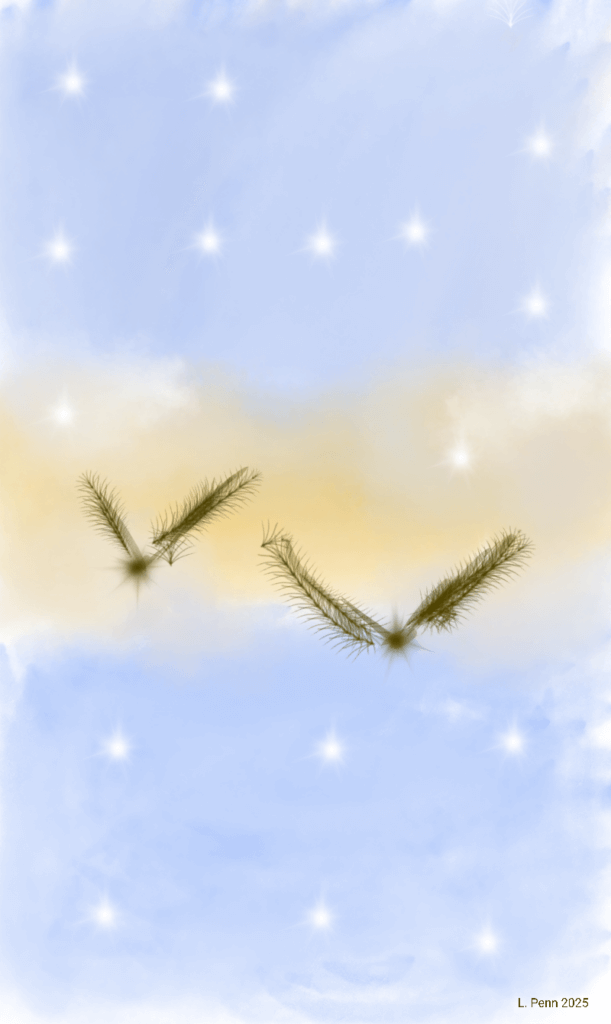
Through the character arc of Yatora Yaguchi, honest conversations on art, and the application of real art methods and techniques, the Blue Period manga helped me rekindle my passion for making digital art. It showed me that creating art can bring passion and meaning to your life when it seems pointless. More importantly, it showed me that anyone who wants to can make art, because it takes hard work and a willingness to learn rather than talent given to a select few. I may not change the world with my digital art, but I can use it to make myself happy and connect with others better.
You can purchase Blue Period anywhere comic books are sold, including Barnes and Noble, Bookshop, and Amazon. You can also read it on the Kodansha manga app.
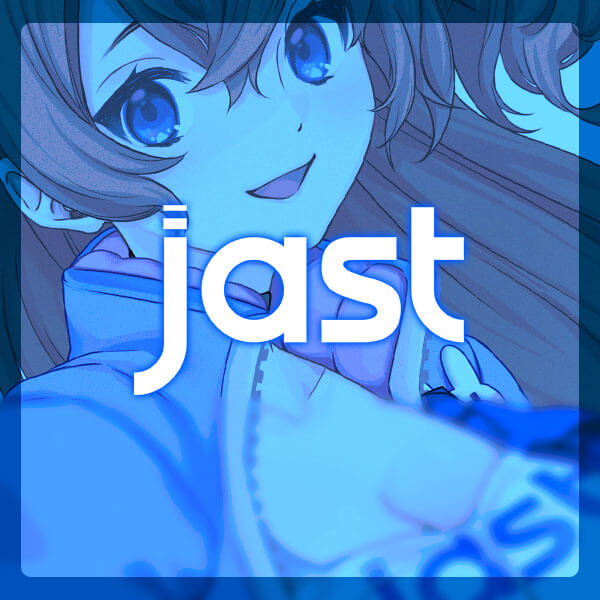
Featured Sponsor - JAST
The sweetest romance and the darkest corruption, the biggest titles and the indie darlings; for visual novels and eroge, there's nowhere better.
Big thank you to our supporters
From their continous support, we are able to pay our team for their time and hard work on the site.
We have a Thank-You page dedicated to those who help us continue the work that we’ve been doing.
See our thank you page